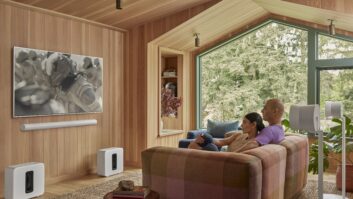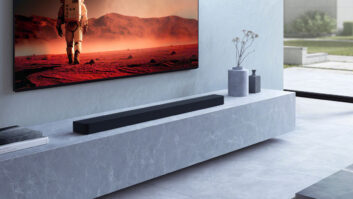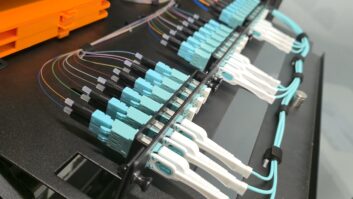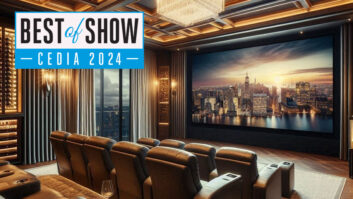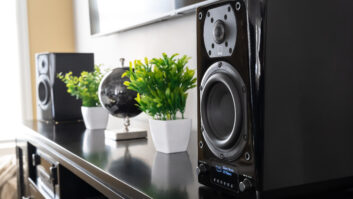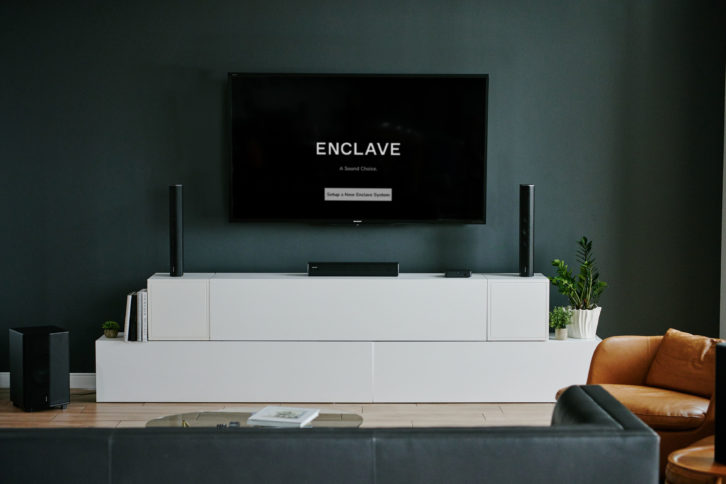
The most common question our team receives and fields has always been, “Why go wireless?” It’s a valid question and one we love to answer because, while there are some obvious reasons to go wireless, there’s a number of hidden benefits as well, which will be discussed throughout this article.
For starters: Consumers hate cables and wires.
They get lost, tangled, frayed, chewed, and, when damaged, they disrupt entire systems. Our society has entered a wireless age and consumers are actively purchasing wireless solutions that either improve their experience or make an aspect of their daily lives easier. Wireless phone chargers, remote car starters, and wireless headphones are all perfect examples, and the list goes on. Wherever and whenever they can, consumers prefer to be untethered. Home audio should be no exception.
For years, the single largest barrier to adoption of home theater has been complicated setup and management process. For many consumers, the term “home theater” conjures up images of bulky AV receivers and a complicated process of running (never mind concealing) speaker wire snaked throughout the room. This barrier is what the entirety of the soundbar market has been built on. Recent advancements in wireless technology means that consumers no longer need to choose between the simplicity of a soundbar and the performance of a wired home theater system, they can have both.
Plain and simple, wireless audio solutions are perfect for those who are not in a position to run wires all over the place or simply do not want to. To dive deeper, we often dispel three common myths about wireless audio.
Myth #1: Wired audio “sounds better”
While sound is subjective, the methods of signal transport are a long standing point of debate in the audio world. Today, the majority of multichannel audio content is delivered as a 16- or 24-bit/48 kHz digital bitstream. A wireless home theater system takes that digital content signal, decodes it, and, while maintaining its pure digital source form, sends the decoded audio stream to the speakers with sub 5ms latency. Adhering to the “shorter is better” rule, the digital-to-analog conversion of the transmitted audio signal takes place directly within the speaker enclosure, with the analog signal traveling over the span of, at most, a few inches of wire to the driver.
Compared to the scenario above, a wired home theater system takes the digital content signal, decodes, and subsequently converts it to analog within the AVR and distributes the signal to the speakers via connected speaker wire from the AVR’s rear terminals. The caveat here is that the longer that an analog signal needs to travel over copper wire to the speakers, the more possibility that issues can arise along the way.
At the end of the day, while some may prefer the sound of a wired system, it’s hard to argue why wired is, in fact, superior to wireless audio. It’s simply a matter of getting the audio stream to the speaker driver while maintaining the purest possible audio signal. Different from days gone by, wireless today is a very effective and reliable method of doing just that.
This brings us to our second myth to bust…
Myth #2: Bluetooth is the only way to do wireless audio effectively
The ubiquity of Bluetooth cannot be understated. With Bluetooth in every smartphone and nearly every car being manufactured today, consumers have been hard trained and now simply accept that Bluetooth is what you use in order to get music or audio from a portal device to play on a speaker. One arena in which Bluetooth is the champion is portability or personal audio. Enjoying content in the car, through headphones, or a portable speaker is what Bluetooth was made for. However, being limited to just two channels of audio and subject to measurable latency eliminates Bluetooth from a being a solution in the home theater arena.
Newer technologies — such as WiSA technology, a standard for high-resolution multichannel wireless audio — are far more powerful when deployed within the home environment. Specific to high-definition wireless audio, WiSA technology enables 24-bit audio transmission at 48 kHz/96 kHz with less than one tenth the latency that Bluetooth audio has and synchronization between speakers less than 1ms.
As a worldwide standard, in order to use WiSA technology, products must pass or exceed certification, which also includes passing Dolby and DTS certifications to ensure a high level of performance across the entire ecosystem.
Myth #3: Wireless audio suffers from/causes interference
The number of wireless devices found within today’s average home is on the rise. One side effect of a high number of wireless devices is bandwidth crowding and interference. Many of the wireless devices within the home, including your in-home Wi-Fi, remote controls, smart home technology, gaming systems, and more, all share a commonly used area of the radio spectrum. When a high number of these solutions are operating at the same time and trying to access the limited bandwidth they operate in, interference and degraded performance result.
For this reason, it is critical to look for and select solutions that operate outside of the common frequencies and channels. Both Enclave CineHome systems, for example, operate on their own discrete wireless network separated from most at-home wireless devices.
Related: Review – Enclave CineHome PRO THX Certified WiSA Surround System
Don’t just take our word for it
As it turns out, we’re not the only ones to field these types of questions. Recently, a Nationwide dealer reached out and said, “Until recently, I had not found any wireless audio speaker system(s) desirable. Customers have asked us many times over the years, “Do you have wireless surround sound speaker systems?” Our answer was, “Even if they were available, they couldn’t sound as good as wired.” As much as that might be argued, there is no denying that Enclave has achieved what we thought was not possible. A system that connects wirelessly with an incredible soundstage image. Not to mention, they are easier to setup and are less expensive than a decent AVR with speakers. Since many customers are intimidated by the operation and complexity of a wired surround sound system, they settle for a soundbar to act as a Band Aid for the poor sound out of their TV. Now they have an amazing solution for the other half of the home entertainment equation; incredible sound made easy.”
Related:
At the end of the day — wired or wireless — it’s all about enjoying content and an incredible experience. Recent advancements have completely leveled the playing field and have made wireless home theater systems a viable choice for a lot of consumers. With these common myths dispelled and speaker wire taken out of the equation, the simple answer to “Why go wireless?” is “Why not?”

